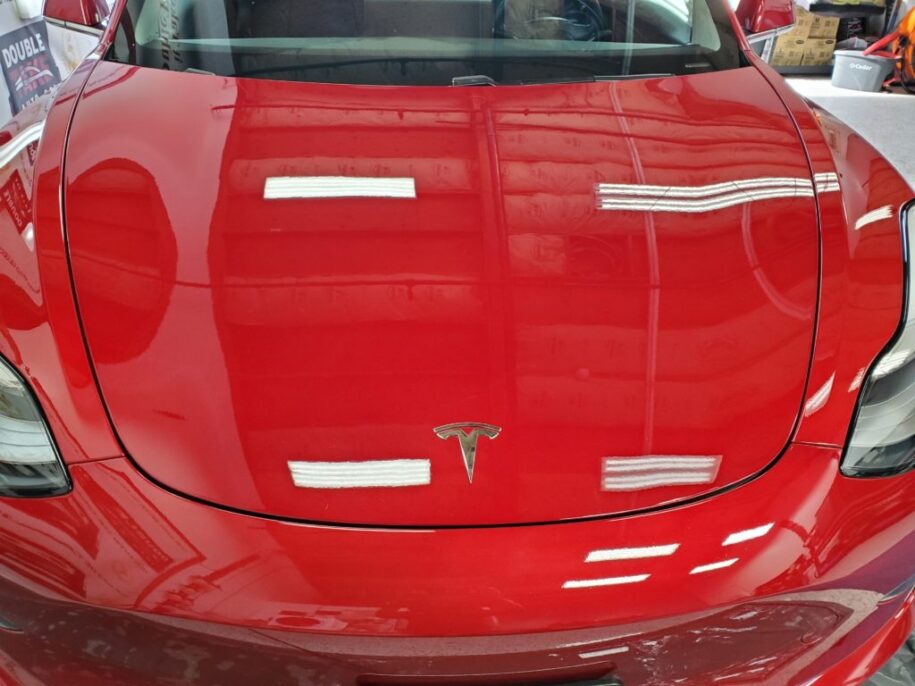As the popularity of Teslas continues to surge, Tesla owners are seeking ways to protect their investment from the harsh elements on the road. One solution that has grown in popularity is ceramic coating, a layer of protective coating that is applied to the surface of the car. This coating helps maintain the car’s appearance while also shielding it from the elements. In this article, we will take a closer look at ceramic coating for Teslas, what it is, and why it is important.
Ceramic Coating for your Tesla
Ceramic coating is a liquid polymer that bonds with the paint of a car and creates a hard, protective layer over the surface. This layer resists scratches, chips, and other types of damage that can occur during regular use. Ceramic coating is particularly beneficial for Teslas because the paint used on them is notoriously thin and susceptible to damage. Ceramic coating protects against damage from rocks, bugs, and other debris that can chip away at the surface.
A major benefit of ceramic coating is that it enhances the appearance of the Tesla by creating a shiny, smooth finish that looks like it just rolled off the showroom floor. In fact, many Tesla owners report that their cars look even better than when they were new.
Ceramic coating is also an excellent investment for Tesla owners because it provides protection from the elements. It creates a barrier between the car’s paint and the outside world, preventing damage from UV rays that can cause paint to fade and become dull over time. The coating makes it easier to maintain the car by repelling dirt, dust, and other types of debris. The smooth, hard surface created by ceramic coating also makes it easier to remove stubborn stains and blemishes from the surface of the car.
Unlike wax or other types of car coatings, ceramic coating is designed to last for years. In fact, many ceramic coatings come with a warranty that guarantees protection for up to five years or more. This long-lasting protection means Tesla owners can enjoy low-maintenance protection for their cars without having to worry about reapplying the coating every few months. This not only saves time and effort but also saves money in the long run.
PPF for your Tesla
Another popular option for protecting a Tesla’s paint is paint protection film (PPF). Both PPF and ceramic coating offer protection, but they work in different ways and have different benefits. PPF is a transparent film that is applied to the surface of a car to protect the paint from scratches, chips, and other types of damage. PPF is more effective at protecting against impact damage, but it can be more expensive than ceramic coating and requires more frequent maintenance.
Ultimately, the choice between PPF and ceramic coating comes down to personal preference and the specific needs of the car owner. Some Tesla owners opt for both, using PPF to protect vulnerable areas of the car (such as the front bumper and hood) and ceramic coating to provide additional protection and enhance the appearance of the rest of the car. Some Tesla owners have gotten a “mini PPF” getting the front bumper and hood done only.
What’s best for your Tesla?
In conclusion, ceramic coating is an excellent investment for Tesla owners who want to protect their cars from the elements and keep them looking like new. It offers long-lasting protection, easier maintenance, and enhanced appearance, making it a worthwhile investment for anyone who wants to keep their Tesla in top condition. Whether you’re a new Tesla owner or you’ve had your car for years, ceramic coating is a smart choice that can help you enjoy the benefits of long-lasting, low-maintenance protection and keep your Tesla looking great for years to come. If you need help with finding a Tesla ceramic coating pro, let us know, and our team can help.

Leave a Reply